Fix errors when installing Windows 7 on a virtual XP machine
TipsMake.com - We have received a few questions from users experiencing Windows 7 in virtual machines. The problem I want to talk about today is when we try to install Windows 7 on a virtual computer running Windows XP, but when it comes time to select the hard drive / partition where Windows 7 will be installed. , a message will display that the device driver needs access to the drive is not available. This tutorial will explain how to fix this problem and allow the Windows 7 installation process to continue processing.
Note that we will skip some steps and do not waste time on too many screens you will have to navigate through, only display screens that are appropriate for this method.
In this tutorial, we will use the Windows XP Pro w / SP3 installer on the virtual computer. Not nice, no tricks, just a basic Windows installer is not edited in any way. Windows 7 is about to be installed from within Windows XP just like you see on the screenshot. The only change we made was that instead of using the standard Win 7 Home Premium Upgrade DVD, I copied, edited, and edited its images so that all versions of Win 7 can be used for Install this process instead of Windows 7 Home Premium only. If you want to modify Win 7 similar DVD, the instructions are here.

Since you can't upgrade XP to Windows 7, we will choose the [Custom (advanced)] installation option.

This is the problem. Even if there is a drive with sufficient capacity for Windows 7 installation, there is still the last message: "Windows cannot be installed to Disk 0 Partition 1" with the option to display details. Click on this message to see details.

The crux of the problem is that Windows 7 cannot be installed because it needs drivers for VMware SCSI Controller. All that's needed here is that you will have to provide the correct driver. The problem is that many users will quickly ignore how to provide the necessary drivers.

Obviously, the first step is to get the necessary driver and then how to get the installer to access it and how to get it to access the installer.
It will be much easier if the next step is done in the order we display it. If you make a mistake out of this order, it's not a disaster, but you'll have to come back if you've skipped a step.
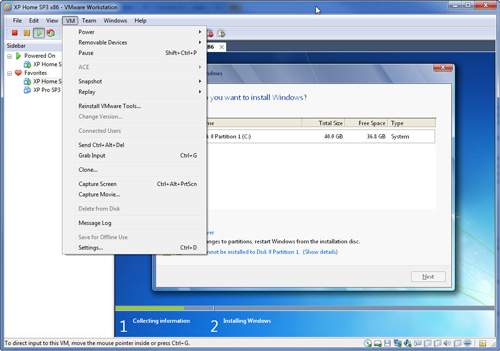
Go to [VM] on the menu bar and select the [Settings] option .
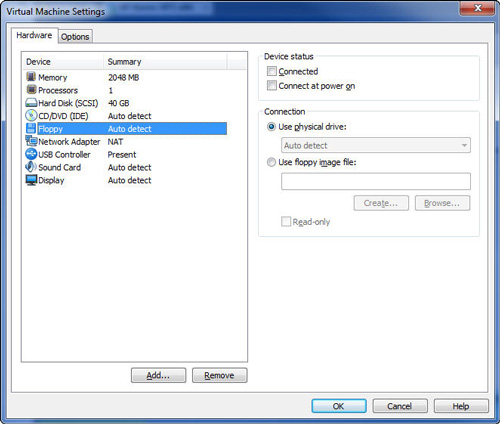
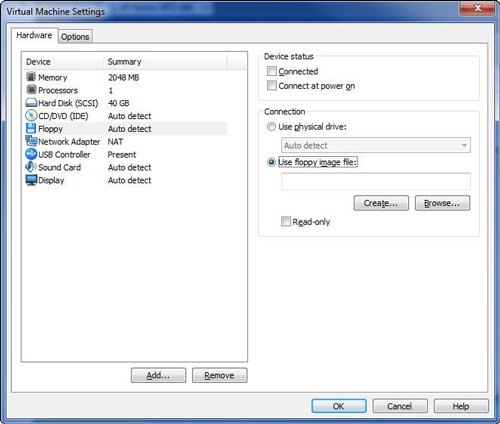
With the [Hardware] tab selected, on the left panel, click [Floppy] will display the customized hard drive in the right panel. Under [Connection] , select [Use Floppy Image File] and then click the [Browse] button.
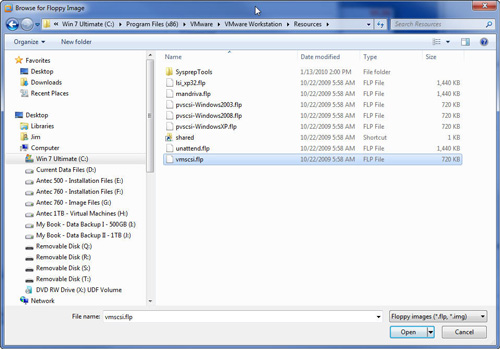
In this step, Windows Explorer will open and you need to find the browse to where the driver file is stored. In our test case, the file (vmscsi.flp) is located in C: Program Files (x86) VMwareVMware WorkstationResources.
You can easily perform a search right on your system to find this file if it is not in our same area and point to the area where this driver is located.
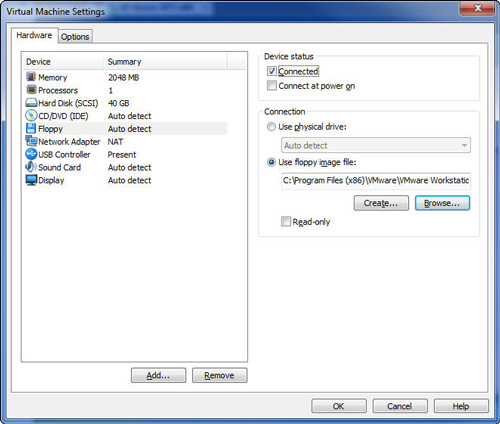
The file you need can be named vmscsi-1.2.0.4.flp , or if you don't have this file, you can donwload it on the VM home page.
Where the .flp file is stored on your host system, there is no difference. It can even be on an external hard drive, CD or DVD. The important thing is that you have to point (find browsing) on it in this step.
Once you've selected the file, click on [Open] and move on to the next step.
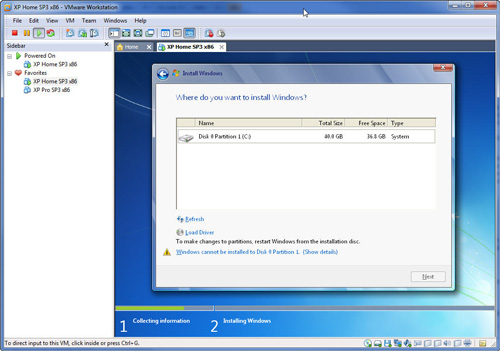
As you can see, the previously selected .flp file is now displayed as a disk image file to use.
In the [Device Status] section , make sure [Connected] has an item next to it and then click [OK ] to process.
Go back to the ' Where do you want to install Windows ' screen, click on ' Load Driver ' and handle the next step.
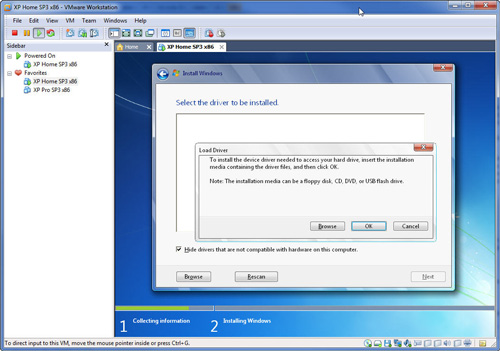
The 'Load Driver' screen will display. Click on [Browse] to process.
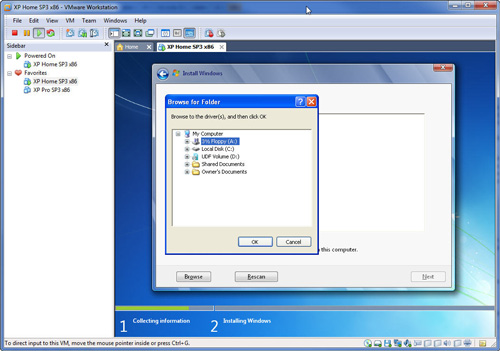
Screen 'Browse for Folder' will display. Click '3 1/2 Floppy (A :) and then click the [OK] button.
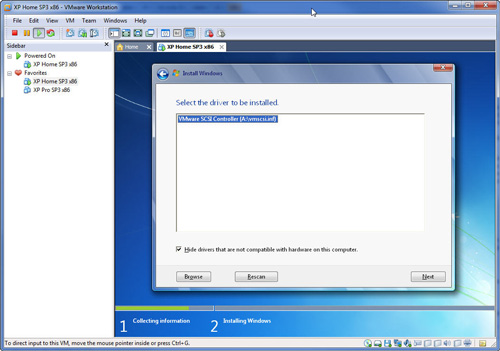
The next step will take a few seconds to execute after some internal drive fails and decodes, the name and location will appear in this window.
If you do not have the dialog box checked for incompatible drivver, you will see some drivers listed. If so, just check the box and click [Rescan] to restrict the list of required compatible drivers.
Click [Next] to continue processing.
Done. Message "Windows cannot be installed to Disk 0" has disappeared and the installation process may continue.
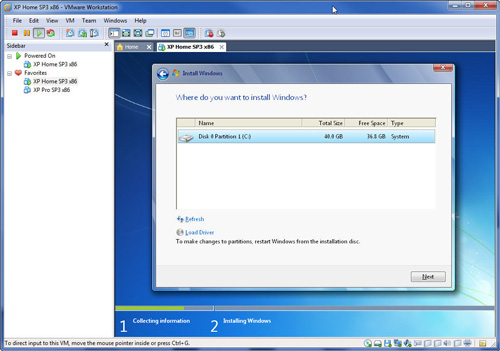
Click the [Next] button .
You will get Windows.old folder message if you install it via an old version of Windows XP installation.
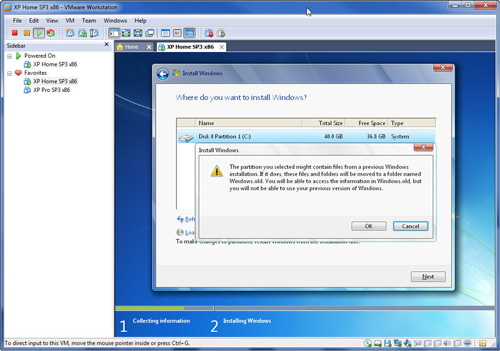
Click [OK] to continue processing.
Your remaining job is to wait for the successful Windows 7 installation process!
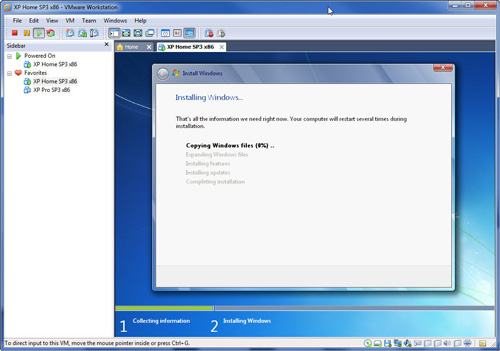
You should read it
- 3 Way How To Install Driver Windows 10
- 5 best virtual machines for Windows 11 PCs
- Back up virtual machines with Windows Server 2008 R2 and Hyper-V
- Installing Windows 10 Technical Preview on a virtual machine is available in Windows
- How to Tune a Java Virtual Machine (JVM)
- Offering Driver Easy Pro, the # 1 driver installation tool for Windows is free 1 year of copyright
- How to set up a Windows virtual machine in Linux
- How to create a Windows 10 virtual machine with VMware Player and VirtualBox
May be interested
- How to set up a Windows virtual machine in Linux
 do you need to run windows software in linux? one of the typical answers is to install windows in a virtual machine. if that sounds scary to you, don't worry too much.
do you need to run windows software in linux? one of the typical answers is to install windows in a virtual machine. if that sounds scary to you, don't worry too much. - Stealing virtual machines and virtual machine data
 there are basically two ways to access a virtual disk file (.vmdk) of a virtual machine, which is using the esx service console or vsphere / vmware infrastructure client with a built-in data warehouse browser.
there are basically two ways to access a virtual disk file (.vmdk) of a virtual machine, which is using the esx service console or vsphere / vmware infrastructure client with a built-in data warehouse browser. - 10 common errors in virtualization
 virtualization has become one of the main technologies in many businesses. however, simplicity of deployment can bring many problems. here are 10 common errors when virtualizing.
virtualization has become one of the main technologies in many businesses. however, simplicity of deployment can bring many problems. here are 10 common errors when virtualizing. - Microsoft free Windows 10 virtual machine, limited time
 microsoft is free of virtual machines on which windows 10 enterprise, visual studio 2017 and many other utilities to promote the development of universal windows platform applications.
microsoft is free of virtual machines on which windows 10 enterprise, visual studio 2017 and many other utilities to promote the development of universal windows platform applications. - Fix the error of not running VMware virtual machine, VirtualBox on Windows 10
 there are many errors when running vmware, virtualbox on windows 10, but typically there are hyper-v, raw-mode is unavailable courtesy of hyper-v and wmware player and device / credential guard are not compatible.
there are many errors when running vmware, virtualbox on windows 10, but typically there are hyper-v, raw-mode is unavailable courtesy of hyper-v and wmware player and device / credential guard are not compatible. - Why You Should Have a Virtual Machine in Hand
 if you like to experiment with different operating systems, are afraid that trying new programs might crash your pc, or need a separate system to run certain programs, a virtual machine (vm) can be quite useful.
if you like to experiment with different operating systems, are afraid that trying new programs might crash your pc, or need a separate system to run certain programs, a virtual machine (vm) can be quite useful. - How to run Windows programs on Mac
 virtual widows allows you to run many windows applications and software. however, if the application you want to run a full horsepower request for mac, then all the resources on the virtual machine are not enough will cause some serious errors. in this case you can use boot camp assistant. boot camp assistant is an integrated apple utility on mac, allowing users to dual-boot mac with windows.
virtual widows allows you to run many windows applications and software. however, if the application you want to run a full horsepower request for mac, then all the resources on the virtual machine are not enough will cause some serious errors. in this case you can use boot camp assistant. boot camp assistant is an integrated apple utility on mac, allowing users to dual-boot mac with windows. - Create clone virtual machine for current Windows hard drive
 the following article will show you how to create a virtual clone for the system and how to use it when you have created a virtual machine.
the following article will show you how to create a virtual clone for the system and how to use it when you have created a virtual machine. - Instructions for fixing errors do not install VMware Tools
 you have successfully installed the virtual machine, but you cannot perform the drag and drop operation between the real machine and the virtual machine as before, you cannot fullscreen the virtual machine ... why? it's really simple, the reason is that vmware workstation uses the file system autoinst.flp (located in the virtual machine installation directory) to create the floppy drive ...
you have successfully installed the virtual machine, but you cannot perform the drag and drop operation between the real machine and the virtual machine as before, you cannot fullscreen the virtual machine ... why? it's really simple, the reason is that vmware workstation uses the file system autoinst.flp (located in the virtual machine installation directory) to create the floppy drive ... - How to run macOS on Windows 10 in a virtual machine
 even if you are a loyal fan of microsoft and windows, it doesn't mean you can't use another operating system on windows. and the best way to do that is to use your current operating system and a virtual machine. in this tutorial, i will show you how to run macos on windows in a virtual machine.
even if you are a loyal fan of microsoft and windows, it doesn't mean you can't use another operating system on windows. and the best way to do that is to use your current operating system and a virtual machine. in this tutorial, i will show you how to run macos on windows in a virtual machine.










 The basic difference between Windows 7 HomeGroup and Windows XP Networking
The basic difference between Windows 7 HomeGroup and Windows XP Networking The interesting secret inside Windows may not be known
The interesting secret inside Windows may not be known Remedies of Windows XP / Vista Recovery
Remedies of Windows XP / Vista Recovery 'Maintain' Windows XP easily in 11 steps
'Maintain' Windows XP easily in 11 steps Windows PowerShell - Automate system administration tasks
Windows PowerShell - Automate system administration tasks Automatically encrypt EFS in Windows XP, Vista or Windows 7
Automatically encrypt EFS in Windows XP, Vista or Windows 7